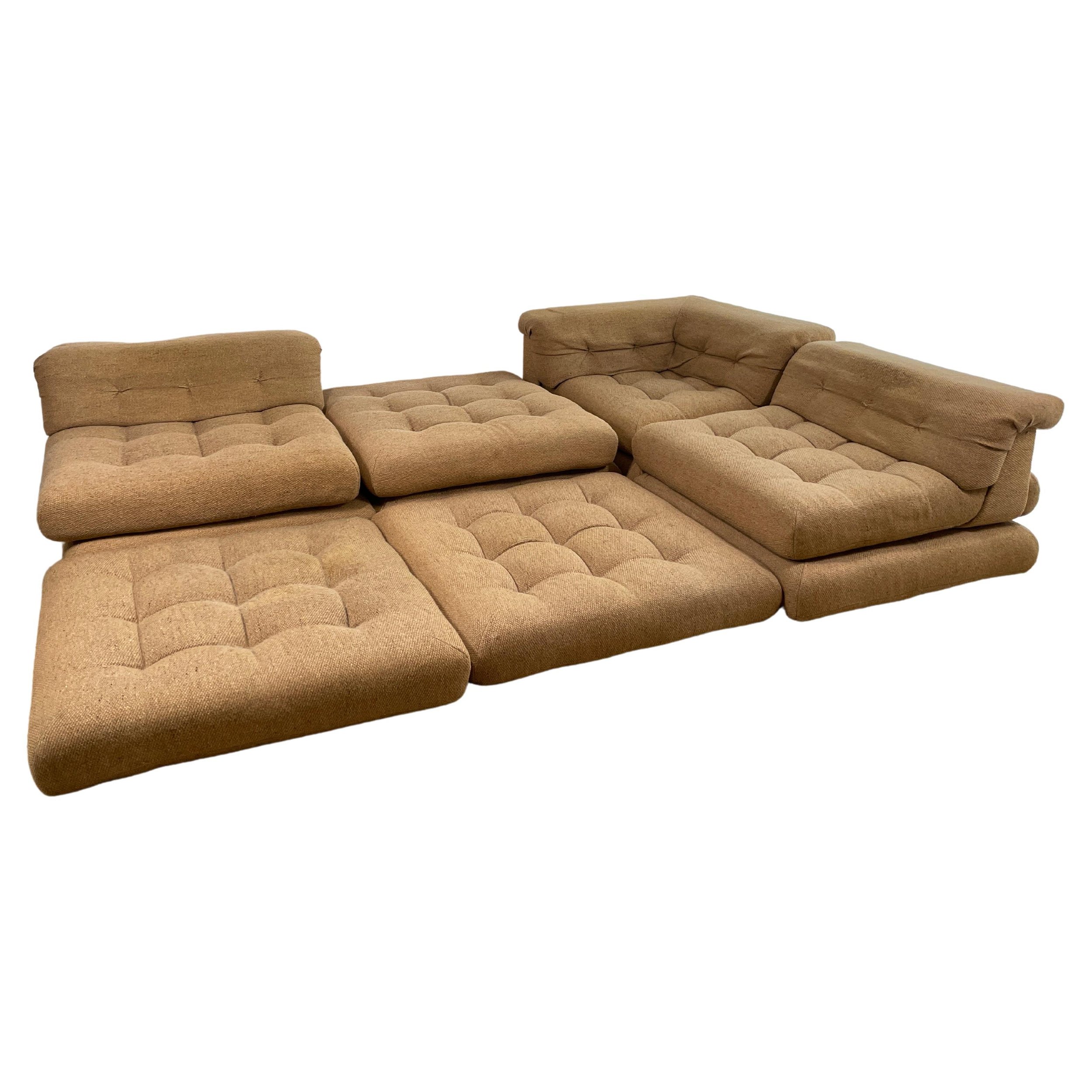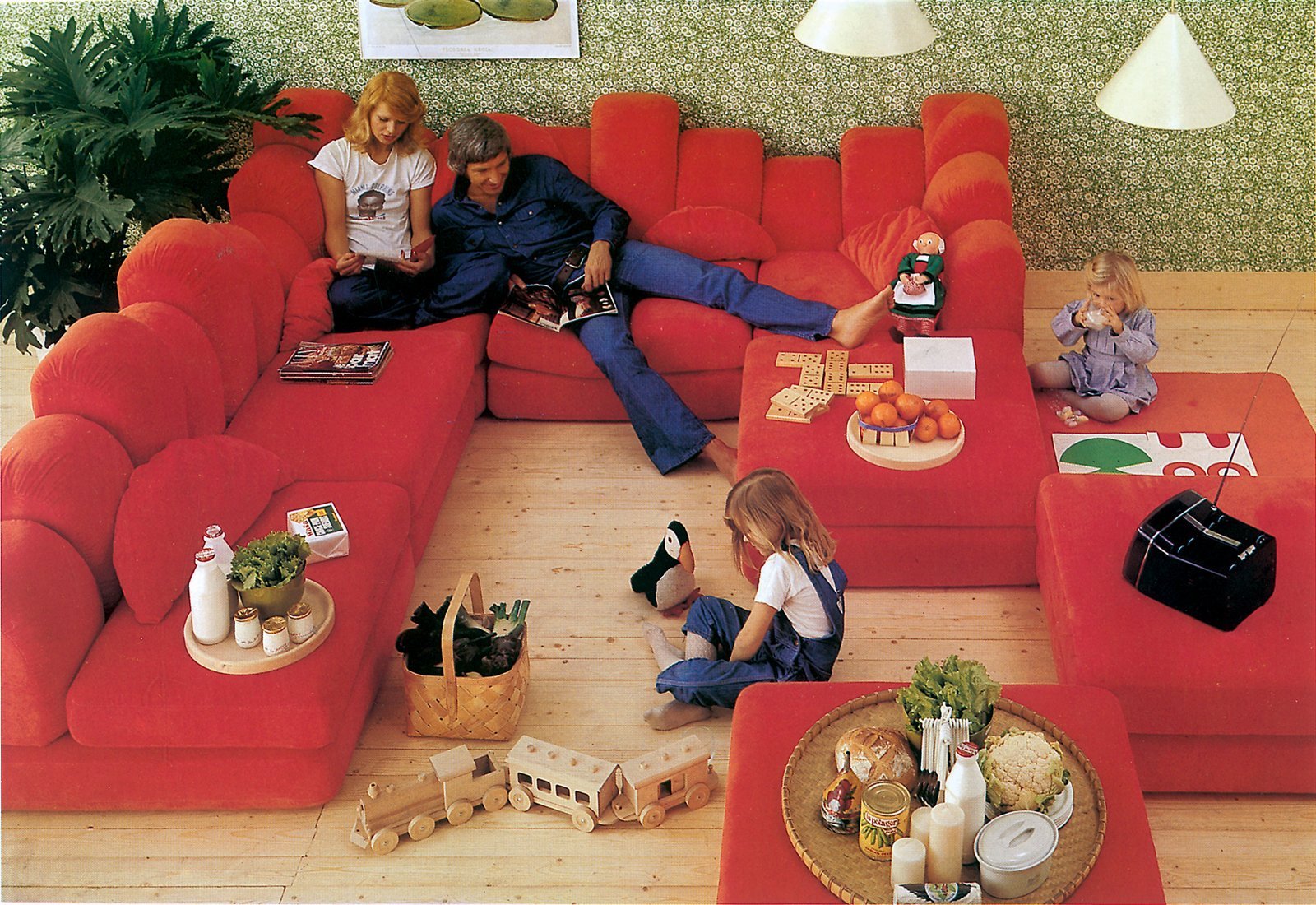The History of Hans Hopfer’s ‘Mah Jong’ Seating System
About The Designer
Born in 1931, German designer Hans Hopfer, has been regarded as the inventor of ‘seating landscapes.’ The sculptor, painter and designer began his career in 1964 in Nuremberg, Germany when he joined the growing company Mabiliar-Basar at Fleeischbrücke. In his contract with the company, Hopfer agreed to only design and develop products under his own name. This was the birth of the brand, Hans Hopfer.
During his first year with Mabiliar-Basar, Hopfer began developing a series of concepts that were both modern and efficient. First and foremost, the functionality must be useful, secondly, its form must be comfortable and lastly, the line must be designed for longevity.
Hopfer's first release under his own self-named brand name was the Bausystem in 1965, consisting of a sofa-bed that provided a flat seating area when the bed was store. This design met his goal of being steamlined as it contained no seams or gaps. This design set the stage for what was to come in the designers near future.
In 1967, Hopfer released the Mobiliante, the first collection that offered a sofa, love seat and ottoman. Customers were given the option to purchase one individual piece or all three together as a set. Again, Hopfer's vision of a streamlined design came to fruition and the final production contained minimal details all while providing maximum comfort for the modern consumer.
Hopfer spent much of his time moving between Buenos Aires, Nuremberg and Paris. Perhaps spending his time in various cultural settings influenced and inspired his ‘landscape seating.’
The Bausystem and the Mobiliante were mere stepping stones for the designer. So much so, that we have been unable to even find photos of the creations. Certainly, what was on the horizon for Hopfer was a design that would change his life. An award winning design, that would become highly sought after all over the world for decades to come.
The ‘Mah Jong’
Prior to its release, Hopfer was taking a much needed break away from designing. His lifestyle had changed dramatically with the birth of his first daughter, Patricia. And it was during this time that Hopfer decided to pivot and adjust his product line to focus on a family-friendly product that could still be considered a work of art. He returned to work and created just that, a family friendly product that was truly a work of art. In 1971 the ‘Mah Jong’ was born.
Initially, the product was named the ‘Forever Sofa’ but was later renamed to the ‘Mah Jong’ as it imitates the Chinese tile game in which players compete to form various configurations.
The sofa consists of three basic elements, a flat square, a back and a corner section. It’s modular design allows the user to combine, stack or spread out the elements to create anything from a lounge chair to a large sofa sectional or bed. The radical idea placed the consumer in an interactive and empowering role, allowing them to become the designer.
Whatever the setting is, the ‘Mah Jong’ can conform and coexist to make the perfect seating system when entertaining or to lounge on with your family.
The design would go on to become one of Roche Bobois’s most recognizable and iconic designs. In it’s early years the sofa was upholstered in plain simple fabrics but today it is dressed in some of the worlds most luxurious fabrics from designers Missoni, Kenzo Takada and Jean Paul Gautlier.
More Work by Hans Hopfer
‘The Player’ by Hans Hopfer for Roche Bobois, 1969
In 1969, Hopfer released ‘The Player.’ He certainly took a chance with naming it. When he was asked why he chose to name this item with such a risqué tag, he explained that this product could be expanded to satisfy the needs of even the biggest player.
DISCLAIMER: THE MILLIE VINTAGE DOES NOT OWN ANY RIGHTS TO THESE PHOTOS. PLEASE NOTE THAT ALL IMAGES AND COPYRIGHT BELONGS TO THE ORIGINAL OWNERS. NO COPYRIGHT INFRINGEMENT INTENDED.





































